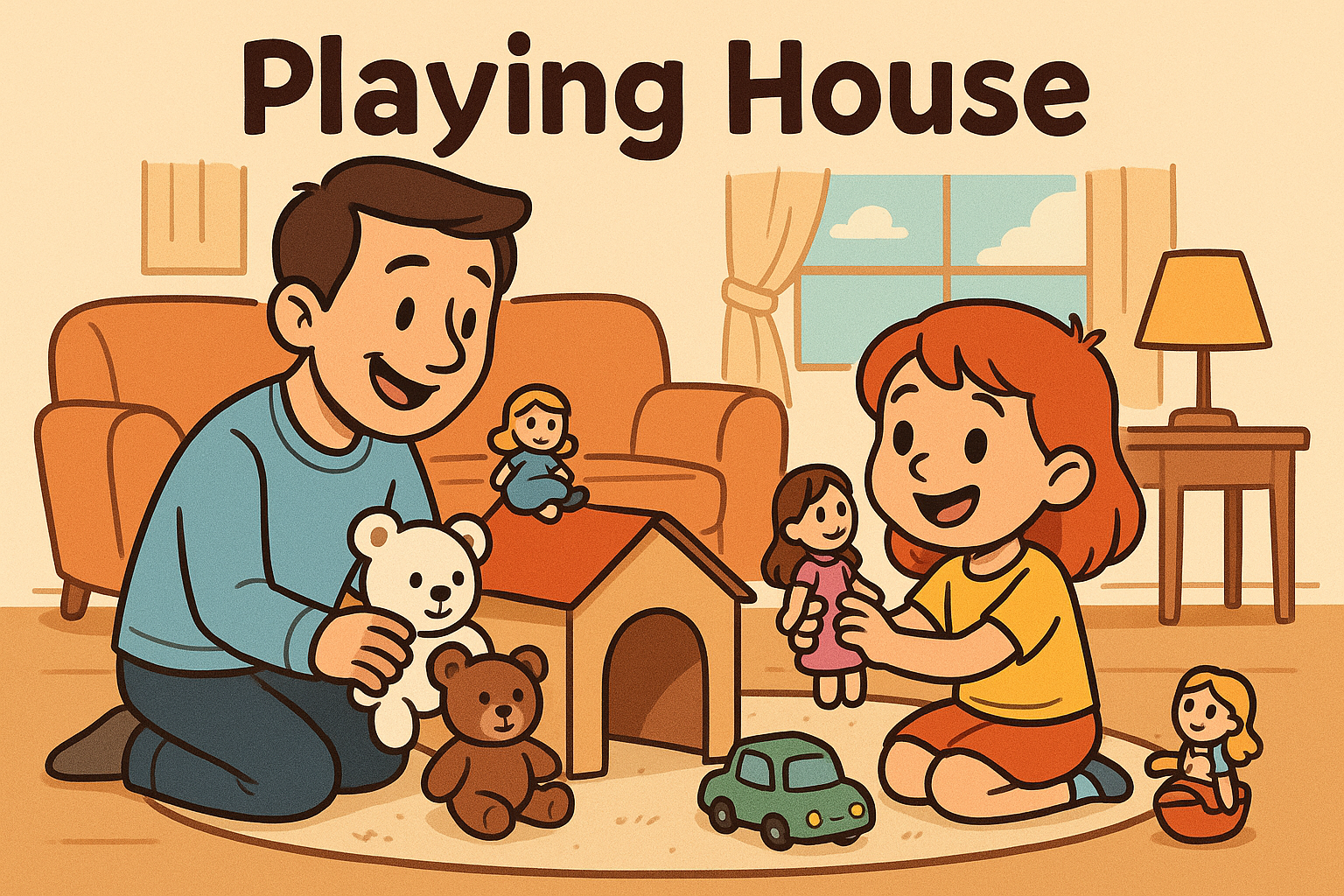Playing house is one of the most open-ended and engaging forms of make-believe play. Whether kids are pretending to cook dinner, look after babies, or tidy up, they’re copying the world around them and exploring what it means to care for others.
This kind of role-play supports emotional development, communication, and storytelling, all while helping children make sense of everyday routines. Best of all, no special equipment is needed—just a little imagination and a few familiar objects.
Materials Needed
- Toy kitchen, play food, dolls, or soft toys
- Blankets, cushions, or boxes for building play spaces
- Optional: real household items (wooden spoons, mixing bowls, baskets)
Tools Needed
- None
Steps
- Set the Scene
Designate a space for your pretend home—use a play kitchen, blanket fort, or simply rearranged furniture. - Assign Roles
Children can take turns being the grown-up, baby, pet, or even the postie! - Start Playing
Act out everyday routines like cooking, cleaning, reading stories, or going to work. - Add Conversations
Encourage dialogue and story-building—“What’s for dinner?” or “Time for nursery!” - Let It Evolve
Let children steer the play and introduce new ideas as they go.
Variations
- Superhero House: What if the parents had superpowers? Mix fantasy with daily life!
- Pet’s View: Pretend to be the family dog or cat and act out their daily life.
- Real Task Play: Let kids help with safe household tasks like folding laundry or dusting as part of the game.
- Outdoor Version: Take pretend house play to the garden with a pop-up tent or cardboard box den.


Leave a Reply